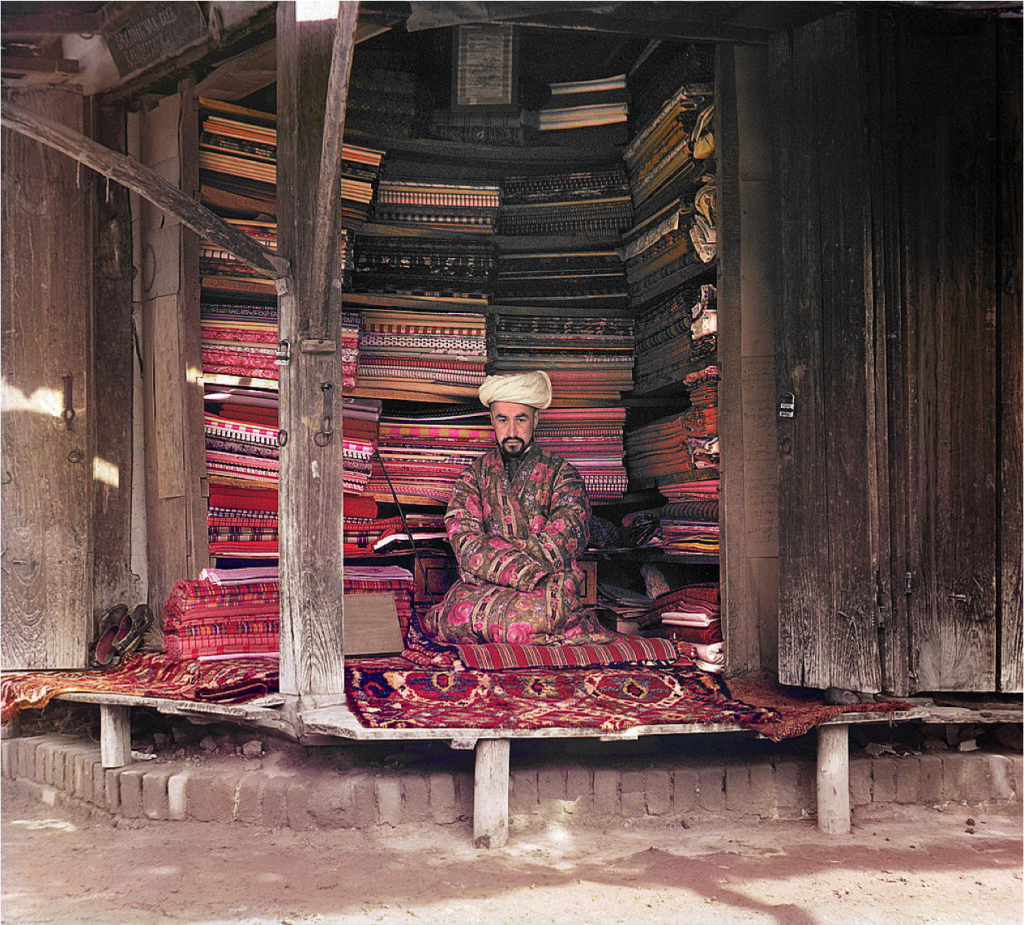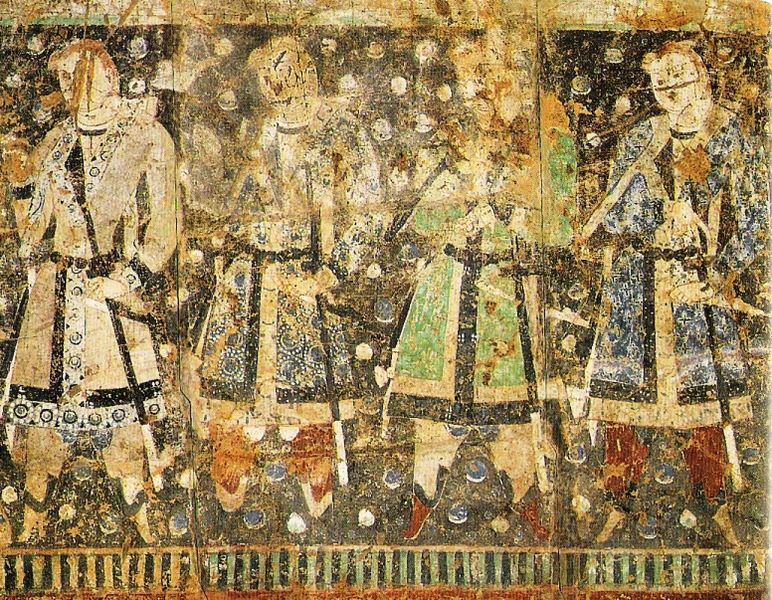Over the past two thousands years, the Turkic peoples have migrated and expanded from a small group of pastoral nomads in what is now western China to form Islam’s longest lasting empire, six modern nation-states that bear their names, and large minorities across Eurasia. But … who are the Turks? Do they even form a coherent social category? Where did they come from? And what makes them “Turk”ish? Guest Carter Vaughn Findley has spent a career working on the Turkic peoples and their history, and helps us trace their long migration from the Gobi to the Bosphorus, adapting, absorbing, and transforming themselves and the societies they interact with along the way.
Guests
 Carter Vaughn FindleyHumanities Distinguished Professor in the Department of History at the Ohio State University
Carter Vaughn FindleyHumanities Distinguished Professor in the Department of History at the Ohio State University
Hosts
 Christopher RosePostdoctoral Fellow, Institute for Historical Studies, The University of Texas at Austin
Christopher RosePostdoctoral Fellow, Institute for Historical Studies, The University of Texas at Austin

In previous episodes, some of our guests have talked about how difficult it can be to actually categorize what the Turkish people are (and you yourself raise the question: do they even form a coherent category?). I was wondering if we could start out by asking why that is such a difficult question to answer?
The difficulty has to do with where you look. The people who most readily perceive the Turks as a coherent category are the experts on language, for whom the Turkic languages form a much more unified and coherent category than, say, the Romance languages do. The Romance languages are prodigal in their variegation. The Turkish languages have varied enough across time and space that they’re not all mutually intelligible, but their commonalities form a much tighter group than some of the other language families that you could compare them too. And that’s true from the earliest texts right up on through to the present all across the Turkic world.
It’s language that makes their unity most apparent. The philologists will sometimes say it’s the only thing that unites them. But if you ask how is that possible—because language carries culture—how can your language unite you when you don’t share a culture? Well it turns out that there are cultural traits that most Turks share. Maybe not all of them, but as you go down the list of identifiers you can look at, the coherence of the category starts to dissolve, and eventually it vanishes completely. In the realm of culture we can find commonalities that are rooted in their nomadic past, the conditions of life on the steps of Central Asia, in very early centuries. There are things we can connect with that.
The other thing that creates a really large commonality is the fact that most Turks eventually adopted Islam. There was a time when no Turks were Muslim. There are still Turks who have never been Muslim. But for the past 500-1,000 years, Islam has been the other, second biggest, identifier. And even for secular Turks today, the religion they’re not practicing is Islam. They still take off on the Islamic holidays and thing things like that [laughs]. There is cultural content that most share.
When you move further on down the list, the variable, in terms of which there is the least resemblance, is what physical anthropologists look at. In America, we call this “race.” The Turks are not, and have never been, a coherent racial category. Istanbul today is famous as a place where you can stand on the bridge and seem to see all the faces of the world go by, and everybody connects that with the cosmopolitanism of the Ottoman past. Most people imagine that there was a time when the Turks were some sort of pure essence that looked sort of like what you’d expect people from Eastern Asia to look. But the archeological remains, the early burials from Xinjiang, in Mongolia find people with European-type features already in prehistoric times.
And today, among the Uyghur Turks of China, who are the people who come closest to living where the Turks started out, one of the leading experts on the so-called “Tarim Mummies,” is a man named Dolkun Kamberi, and if you saw him walking down the streets, you might suppose he was from some place like Estonia, or Latvia, or Lithuania. He looks like someone from Northern Europe, not somebody with a Chinese passport and a pure Turkish name. He’s as Turkish as you can get, and he exemplifies that they were never a coherent racial category.
This is a blow to the nationalists and ultranationalists of the past who thought that there was once a time when there was a pure linguistic essence and a pure racial essence, and neither one of those ever existed. That sort of racial purity was never there, and the language—well, there is great consistency in the language, going all the way back to the earliest texts—but the earliest Turkish inscriptions are already full of foreign loanwords.

So you mention that the sort of Turkish homeland, whenever that was—when would that have been, by the way, that we could put them back on the steps of Central Asia?
Well, the Chinese source has mentioned the sort of people called the “Tujue,” which apparently is still the term that you still have to use for Turks, other than just people from the Republic of Turkey when you’re writing in Chinese. (Because my book is just being translated into Chinese and there was a really long discussion about which term to use). The Chinese sources start to mention these people in 550s of the Common Era. So this is the point at which a Turkic clan rebelled against one of the Steppe empires that was their overlord, and they set up independence. So the Turks, under that name, appear in history as independent actors in the 550s of the Common Era. Now, of course that doesn’t mean that there weren’t Turkic people there before then, but we don’t have historical documentation of it.
I’ve heard it described, and in fact I think you mention it in your book, this notion of the “nomad factory,” spewing out successive waves westward. Do we have any sense of what drove those westward migrations? Was it social pressures? Geographic pressures? That sort of thing?
Well, you know there’s this famous line, I think it came from some poem someone wrote in the 19th century, “Westward the course of empire takes its way,” (or sweeps it’s way, whichever it is). I think what they were talking about was the USA and the westward expansion of the USA. But there is some kind of phenomenon, some kind of factor in the northern hemisphere that does seem to produce western expansion in both the eastern hemisphere and the western hemisphere. I don’t know what it is, it may have to do with the circulation of the winds around the 40th degree, north latitude. The winds normally blow from the South-West. Maybe that creates drier conditions.
Another factor that’s definitely involved in this is that Eurasia has these ecological zones. If you look at bioclimatic maps of Eurasia, the Step build and the semi-arid zones north of there, it creates a very wide ecological car-door that expands almost from the Pacific out to the Ukraine. Well, really into Hungary. Hungary is actually at the end of this great Steppe. For that matter, the Polish plain is about as flat as you can get—so it’s really a northern part of this. So it really extends into Europe. People who were well adapted to life on this environment, who had this mobile pasture, who were good at raising the sheep and horses and camels that could flourish on this, this was like a sea to them.
Now, there is a factor that creates a drive to move to the west; as you move further eastward in this step-build of Eurasia, the altitude rises and it gets colder and drier. So by the time you get to Mongolia, you’re in an environment like this; your ability to support any given number of people and livestock, on a given amount of surface area, is going to be lower. And to improve your ability to feed your flocks, there’s going to be a force that is going to tell you to move west. So there are ecological factors that contribute to it. I don’t think we know if we can tell with mathematical certainty, but we can see some of the things that contribute to this.
Well, of course some of those waves that have gone westward were very familiar with the Ottomans. But they were fairly late in the game, the Ottomans, were they not?
The Ottoman Empire arises in the 13th century—well, it actually starts in 1300, is what I mean to say (or right around there; 1299 or 1300). By this time the Turkic peoples have moved into the Middle East and become—well, actually the Selçuks were the big players in the effort to reintegrate the Islamic world and to want a (or a few) large empires. And then the Ottomans are the next big one after that. And they create the longest lasting state in Islamic history, and one of the biggest overall.

And I just want to wrap up, since we started with language I figured we could finish with language. You mentioned the commonality between the Turkic languages, but the Turkish language, modern Turkish, is quite different from Ottoman Turkish. It went through a series of language reforms. I wonder if you could just touch a little bit on how that has affected modern Turkey’s relationship with its past.
Well it’s affected it in complicated ways. The extent to which the founding of the Turkish Republic was or was not a revolution is another one of these things; it varies widely. And culture is one of the things were it aspired to be the most revolutionary. And changing the alphabet and systematically trying to change the content and nature of the language was an effort at cultural revolution. It cut off the memories of the past. And the past means before 1928. So people are brought up not to know the literature before 1928. You can’t understand it. Some of those late Ottoman texts are not very hard to understand in earlier periods. There’s a lot that’s terribly difficult to understand. But it was a deliberately constructed cut in the national consciousness.
Once this gets made, and a certain amount of consensus gets built up around it, or a major stream of opinion gets dedicated to it, it becomes very hard to reopen this question. One of the things that’s most interesting about Ahmed Hamdi Tanp?nar, one of the most uncontestably great Turkish novelists of the 20th century (the kind of guy that’s everybody’s favorite—no one dislikes Tanp?nar that I know of) one of his things was he was actually a cultural conservative. Not religion; he never talks about Islam in his books. But he’s a cultural conservative who understood that the past is something we need to understand the present. And he works through metaphors and imaginative scenarios in his books, but in some of his essays he says this in a rather propositional way. He says the biggest question for us is, like Hamlet, we are living through the crisis of to be or not to be? And the solution to it is associated to how we relate to our past.
The Ottoman language is extremely interesting in a whole lot of ways. One of the problems about it is it was never standardized in terms of things like its orthography. The grammar is consistent, but the use of the Arabic script for it (like the spelling) was never stabilized. And this is an interesting paradox in the comparative history of the Islamic peoples because Arabs and Persians both stabilized these things quite early on without any big state or government being involved. I think it was done by consensus amongst the scholars. And in the case of Ottoman Turkish, you had a government that was dedicated to the use of this language—maybe if they had let it be done to the only been work scholars then it would have been systemized [laughes].
Out of curiosity, did normal people speak Ottoman?
Well this, of course, is one of the justifications for the reform. Normal people didn’t. They did in certain situations. They did use phrases that were common of Ottoman Turkish, like this Persian style izafet construction. You know, something like, “jenab-i ali” that sort of thing. [editor’s note: the izafet involves the joining of two nouns to create a compound phrase. jenab=”side” or “presence”, ali=”high” or “great”, together meaning “Exalted Presence,” the equivalent of “Your Majesty.”]
Those had a conversational usage, they really did, but the problem about Ottoman was it was designed to show off your status as a member of the cultural elite. And the purposes for which people used it historically, until the middle of the 19th century, were not in purposes of mass communication. That meant it was ill-adapted as a means of mass communication. The language needed to be revolutionized—and in that sense, a revolution did start. ?erif Mardin starts talking about a language revolution starting in the 1840s with the rise of the modern print media, which were intended for a large mass audience, and the writers suddenly did have to start using more accessible expressions. And they also had to get interested in not only displaying something, but actually reaching out, grabbing you by the shirt collar, and saying, “Hey, listen here” to get your attention.
So a more active approach, plainer language, and an activist appeal to the readers was already coming in. In that sense, the cultural revolution of 1928, one of the things that’s fascinating is the relationship between long-term and short-term currents of change. The language reform on 1928 is like a very sharp razor cut kind of a thing that makes a decisive before and after. But it’s also a part of an arc of cultural revolutionary change in the production of meanings, that had started in the 1840s and didn’t stop until long after 1928.